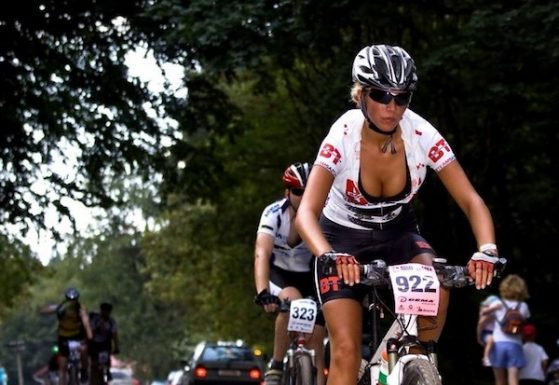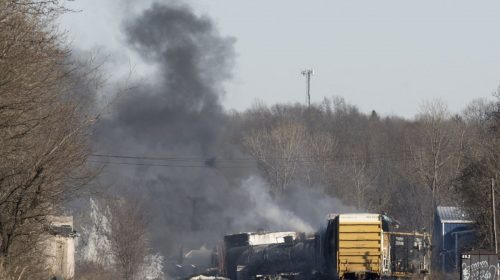On July 24th, for the first time since 1989, the women will roll out for their own Tour de France. The Tour de France Femmes avec Zwift will take place over eight days starting on the Champs Elysées in Paris on the same day the men will conclude their 21-stage journey. While it is not the first women’s Tour de France, it is the first in quite some time and the first that will be broadcast live worldwide.
The race existed back in the 1980s, held at the same time as the men’s, with shortened courses and the same finishes. Back then the race was 18 stages. From 1992 to 2009 the women had the Tour Cycliste Féminin and the Grande Boucle Féminine Internationale, a tour of France but not the Tour de France.
For years when the Tour de France rolled around one of the top questions for the race organizers was “will there be a women’s event in the future?”. Women in the peloton, women and girls who dreamed of one day pulling on the yellow jersey, and retired professionals alike would wonder the same thing until in 2014 a petition sent to the ASO spurred the inaugural La Course by the Tour de France, a one-day event that put the women on the world’s largest stage. Although the day of racing was broadcast live, it was still only one day, and the people wanted more, they demanded it.
With the exception of some questionable comments made by Tour de France director Christian Prudhomme early on in the campaign, the ASO has seemingly thrown its full force behind the first Tour de France Femmes in years, but the additional backing of Zwift, a company that has long been an avid supporter of women’s cycling, is what seals the deal in terms of the future security of the race.
Every professional female cyclist who has ever told an outsider about their job receives the same reply in various forms: “Oh, so you race the Tour de France?” Now, after years and years of waiting and a good amount of lost hope 144 women will get to say “yes”.
The Course
A course can really make or break a race, as we learned with the 2021 Giro Donne, but any initial misgivings about the Tour de France Femmes avec Zwift only being eight days instead of more, like the men’s, were quickly put aside when the ASO unveiled the route.
The women will tackle every type of terrain, including gravel, throughout the eight days. There is a little something for everyone, with the amount of climbing increasing each day the course provides an opportunity for the yellow jersey to change hands after each stage. Riders of every specialty can target the race, not just your standard general classification rider.
Stage 1: Champs-Elysées (82 km) | Sunday, July 24
To kick off the iconic event the women will return to the scene of the first La Course by the Tour de France; the Champs Elysées.
After rolling off from the Eiffel Tower the women will race twelve laps of the legendary circuit, finishing on the Champs Elysées just before the men roll in for their event. The timing and location ensure a crowded start to what will be a defining event for the women’s 2022 season.
The course itself isn’t as easy as it appears. If it rains, which is unlikely, the cobbles become downright treacherous. The final sprint will take place on cobbles, so those riders who excel at the Spring Classics will be eyeing the first yellow jersey in Paris.
Despite the more-or-less completely flat course, the race has also thrown in a mountains classification sprint with 62 km to go to kick off that competition.
Stage 2: Meaux to Provins (135 km) | Monday, July 25
The second stage, starting in Meaux just east of Paris, is another day for the sprinters. After an initial climb at 15 km, the race continues for a further 120 km to the finish in Provins.
The finish itself takes place on a false flat incline and will favor the fastest women in the peloton.
Stage 3: Reims to Epernay (133 km) | Tuesday, July 26
Meters gained continue to tick up on stage 3 from Reims to Epernay. There are five categorized climbs over the 133 km long stage, with the first coming only 21.6 km into the stage.
The four other climbs are all in the second half of the stage with the final two coming within 16 km of the finish. The final climb up Mont Bernon is only 1 km long averaging 4.6% but will be a decisive feature with only 2.7 km to go to the finish. Côte de Mutigny just before it is short at just 900m but has an average gradient of 12.1% and will likely splinter the peloton. The yellow jersey will likely change hands at the finish as sprinters struggle over the climbs.
With two sprint-type stages opening the race and a challenging fourth stage, the third could go to a breakaway, but it is more likely that a team with a punchy sprinter will hold things together for Côte de Mutigny. Someone like Marianne Vos or even Lotte Kopecky will be licking their lips for this finish.
Stage 4: Troyes to Bar-sur-Aube (126 km) | Wednesday, July 27
Stage 4 is sure to be a test for any riders dreaming of holding yellow at the top of the Planche des Belles Filles. The 126 km stage features four gravel sectors all in the final 60 km of the stage. The first two sectors and the final are all climbs as well. It’s giving Strade Bianche.
Following the trend of upping the climbing game for each stage, there are six climbs in total on stage 4, with the final two coming in the last 9 km. All the best parts of the stages are stacked after the halfway mark. This stage will turn the tide of the race and could see some of the GC favourites out of contention altogether.
The age-old cliche applies to stage 4; the Tour cannot be won here, but it can most definitely be lost.
Stage 5: Bar-le-Duc to Saint-Díe-des-Vosges (175 km) | Thursday, July 28
After the challenges of stage 4, stage 5 is a great day for a breakaway to survive to the finish. With only three climbs from Bar-le-Duc to Saint-Díe-des-Voges the stage is tame compared to those on either side of it.
At this point, the jersey may be comfortable on the shoulders of someone on a top team, and if that is the case riders who have lost enough time may be safe to try their hand. The team in question can confidently control the gap and bring their leader safely to the finish ahead of stage 6.
Plus, stage 5 is the longest stage of the eight, perfect for an ‘easy’ day in the peloton. Or as easy as a bike race can be.
Look to those fighting for polka-dots to slip up the road.
Stage 6: Saint-Díe-des-Vosges to Rosheim (128 km) | Friday, July 29
Stage 6 is significantly shorter than the day before and features four climbs, the last of which tops out 7.7 km from the finish. While it isn’t the most challenging day, a descent to the finish favours the gutsier riders like Anna Henderson, Kasia Niewiadoma and Elisa Longo Borghini.
There is also more climbing on the day than just the categorized climbs, so the race will be harder than it looks on the profile. It could be another day for the break with a second race for time happening behind.
Stage 7: Selestat to Le Markstein (127 km) | Saturday, July 30
The first of the big mountain days, stage 7 finishes in Le Markstein after a 13.5 km long climb up the Grand Ballon. But it isn’t smooth sailing to the base. The peloton will also race up the Petit Ballon, a 9.3 km climb that averages 8% grades, and the 7.1 km long Col du Platzerwase that averages 8.3% for almost 30 km of climbing over 127 km.
It will be a brutal day on the bike for everyone, as the first two climbs com thick and fast with no time to recover between.
Teams only have 35.6 km to get organized before the climbing starts, so it will be hard for anyone to escape and get much of an advantage. The final climb will come down to the best climbers as the rest of the peloton trickles in solo or with just a few colleagues for company.
Time gaps will be significant after the day is done and with Annemiek van Vleuten riding the way we have seen at the Giro Donne it will be hard for anyone to beat the Dutchwoman on the Grand Ballon.
Stage 8: Lure to La Super Planche des Belles Filles (123 km) | Sunday, July 31
If the general classification isn’t wrapped up after stage 7 it will be at the end of stage 8 (obviously, because it’s the final stage). The race will culminate in dramatic fashion atop La Super Planche des Belles Filles after 123 km of racing. Before this epic finale, the peloton will race up the Côte d’Esmoulières and the Ballon d’Alsace. The second climb is 8.7 km long and averages 6.9% so the peloton will already be in pieces by the base of the Planche des Belles Filles.
At 7 km long, the climb that will signify the end of the Tour de France Femmes avec Zwift is not as long as the Grand Ballon from stage 8, but it is ripe for some attacks from riders who may have lost time the day before. It will be the last chance for someone to snatch the yellow jersey, and with gravel and some leg-breaking steep sections, it is a perfect end to what will be a legendary event in women’s cycling.
Live coverage and riders to watch
The ASO has promised two hours of live coverage a day. For those in the U.K. and Europe coverage can be found on Eurosport and their streaming platforms which include GCN+. In the USA the race will be shown live on CNBC and on the Peacock app or website while in Canada viewers can tune into FloBikes. Australians are lucky enough to have the race on SBS which means presenting from the lovely Gracie Elvin (member of the Freewheeling podcast by CyclingTips).
The start list will be live a few days before the race kicks off, so check back for a full and updated list of contenders.




